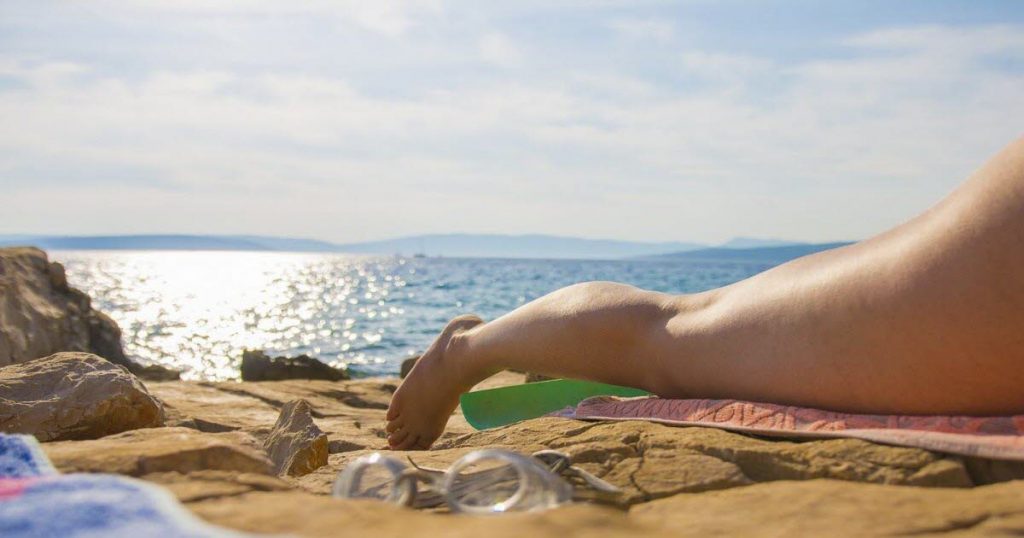Is returning from vacation with brown skin a sign of a successful vacation? If we think how many people take pride in flaunting their tan at the end of summer, we can think so…but is that sun exposure really beneficial? Are all skins equal to rays? How long can we keep these new colors? All answers in five points.
1/ How long can a tan last at most?
If the ability to tan differs for different skin type, the process is always the same: under the influence of ultraviolet rays, certain cells of the epidermis will produce melanin, this pigment that will color the skin. The tan appears about two days after exposure to the sun and then gradually disappears as the skin renews itself. Complete renewal takes an average of 25 days: you can not “keep” a tan more than a month after the last exposure to the sun.
To extend the treatment period to the maximum, it is necessary to moisturize the skin well, morning and evening, drink plenty of water, and on return from vacation it is necessary to do a face and body peeling every three days.
2/ Do sunburns accelerate tanning?
“Sunburn is really a skin lesion. Mild sunburn, in addition to pain, causes thickening of the skin. If the sunburn is more severe (burning, blisters), the skin peels off and makes way for new, more fragile tissue that may in turn burn… It’s a vicious cycle! ” League Against Cancer Alert. So it’s too bad that you absolutely want to speed up the process by exposing yourself too much or unprotected.
3/ Can all skin types tan?
“Some individuals, such as redheads, make little or no brown pigments that allow tans,” the association identifies. And he added: “If you have very light skin, white (albino) or red hair, freckles appear very quickly in case of exposure (Picture 1), or if you have very light skin, it can become tan, blonde or light brown hair, freckles that Shown in the sun (photograph 2), don’t try to tan.” Particular attention should also be paid to children with very thin skin, especially those under the age of 3 years.
4 / Does sunscreen prevent tanning?
Sunscreen won’t prevent you from tanning, but it will protect your skin from UV rays. Choose a lotion that protects against UV rays, which are responsible for sunburns, burns and the majority of skin cancers, and UV rays that cause wrinkles, spots and aging of the skin. However, no solar product blocks 100% of the light rays. In addition to the recommended T-shirt and hat, go for a high sun index (50 or 50+) and apply it generously in a thick layer every two hours. Repeat the process after each swim, then avoid direct and prolonged exposure to the sun as much as possible, especially between 12 noon and 4 pm, which is the hottest hour. This will allow you to stay longer and get a more even tan. If it’s the same, try the hottest hours, and know that two 10-minute sessions are enough, because the sun is strong at its zenith.
5 / Are brown spots on the skin harmless?
The brown spots that appear around age 50 on the most exposed areas, such as the hands and neckline, were caused by UV rays that penetrate deeply into the skin and alter the complexion. Harmless, it is a sign that a person’s “solar capital” has already been damaged, and, accordingly, the risk of skin cancer is present. Like moles, these spots should be monitored by a dermatologist, as they can be mistaken as an age spot but mask a more serious lesion, such as melanoma.

“Music guru. Incurable web practitioner. Thinker. Lifelong zombie junkie. Tv buff. Typical organizer. Evil beer scholar.”







More Stories
The Air and Space Forces want a “modular” plane to replace the Alphajet
Spain confirms that it is holding talks with Morocco
The thickness of the ice crust in Europe will be 20 kilometers